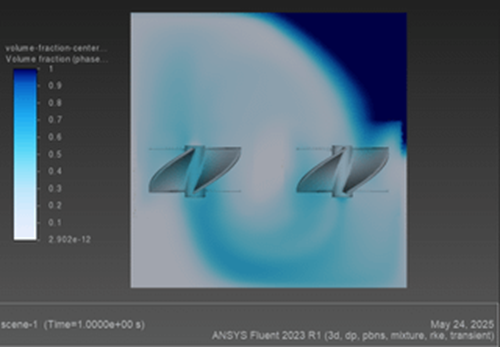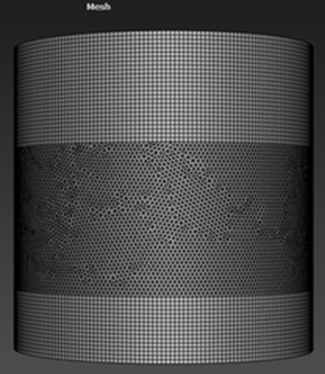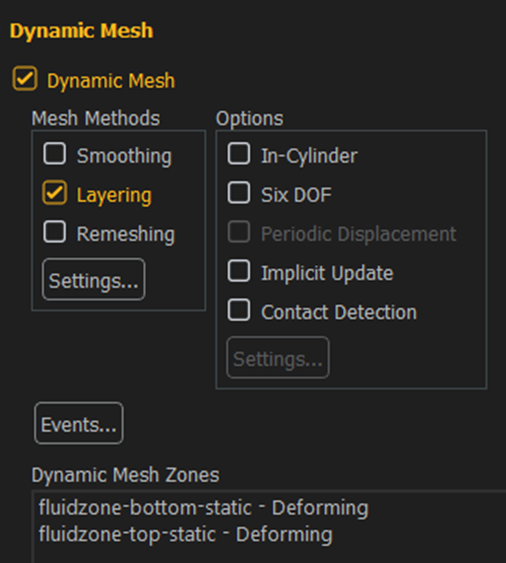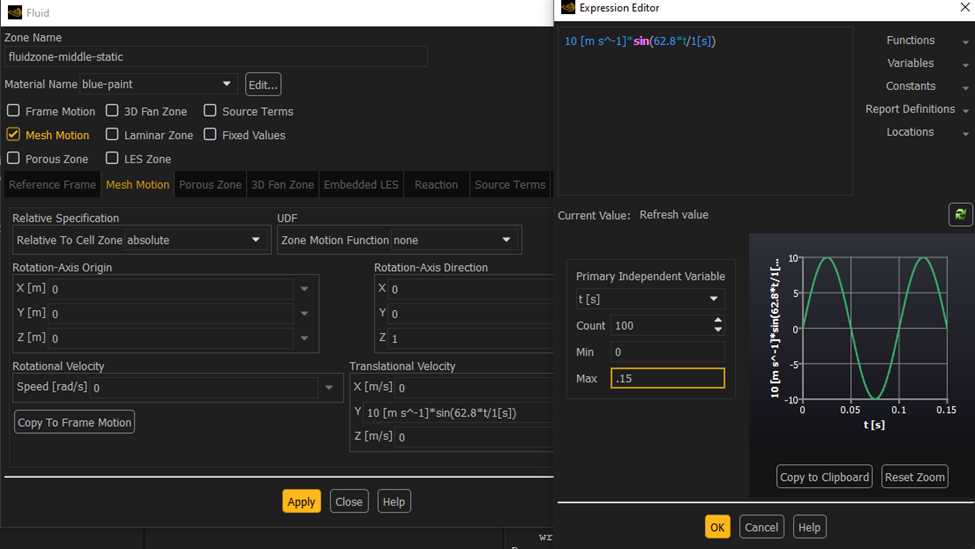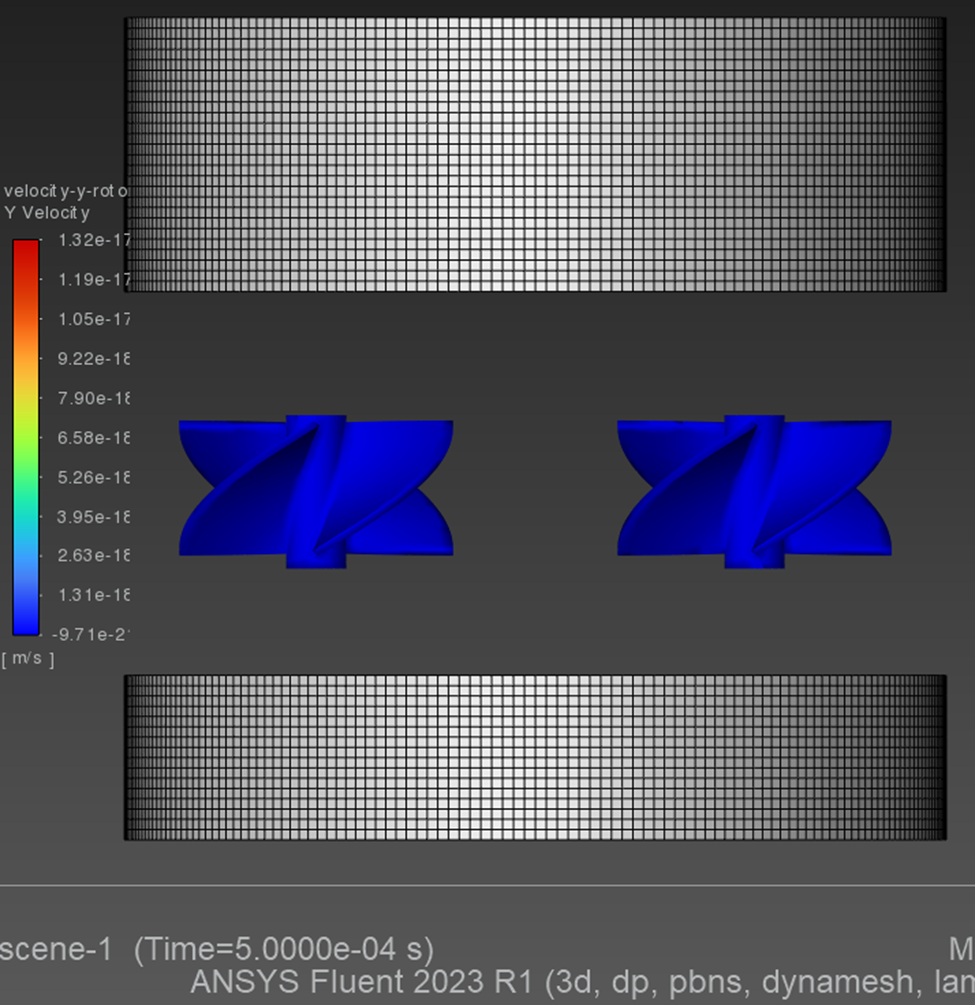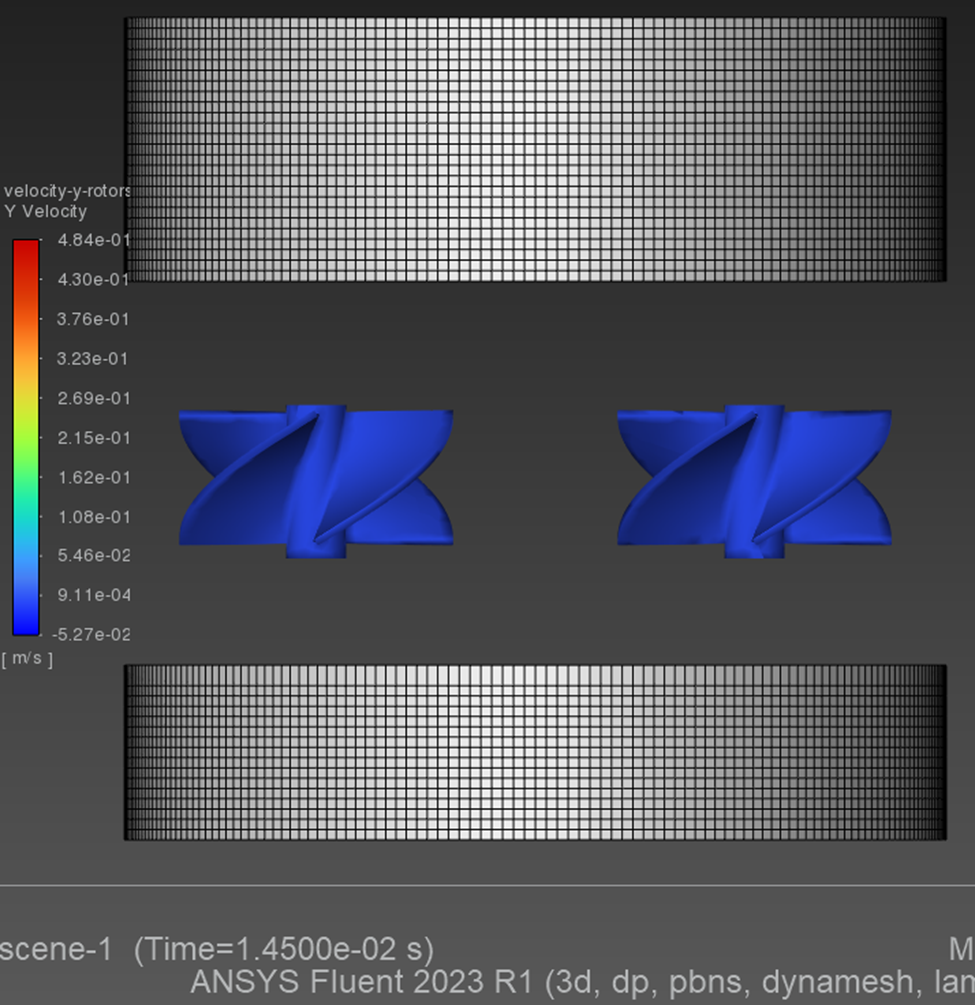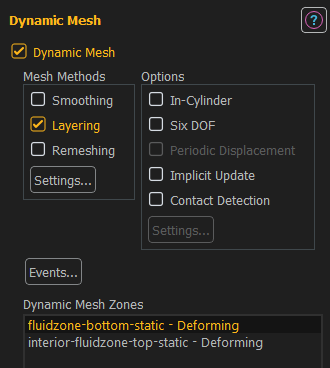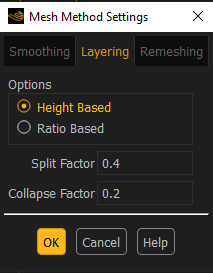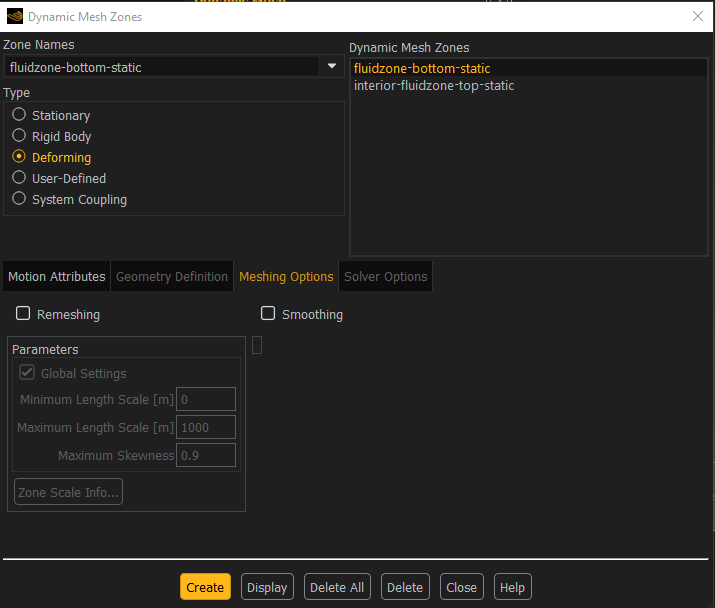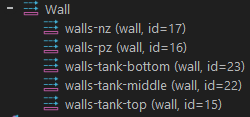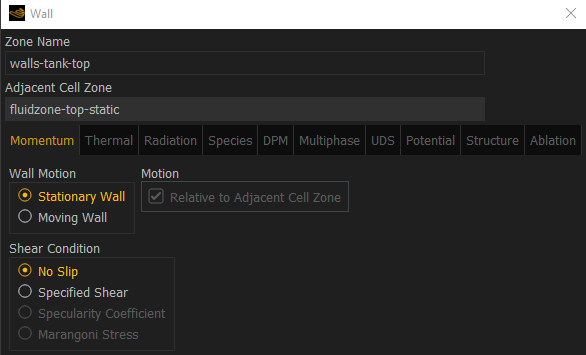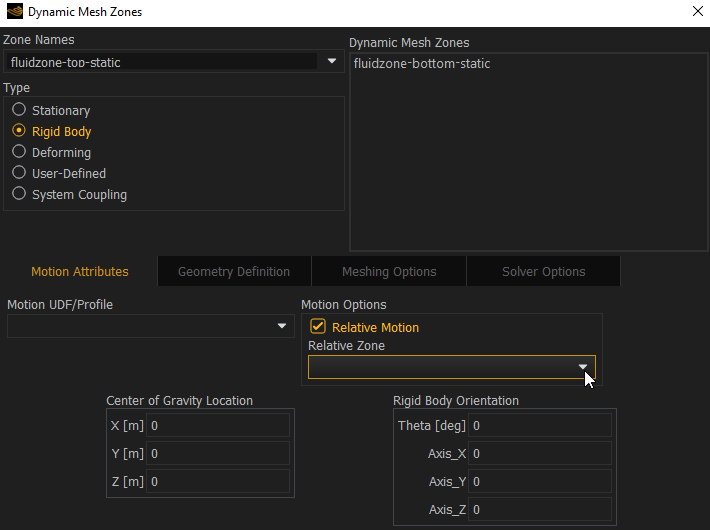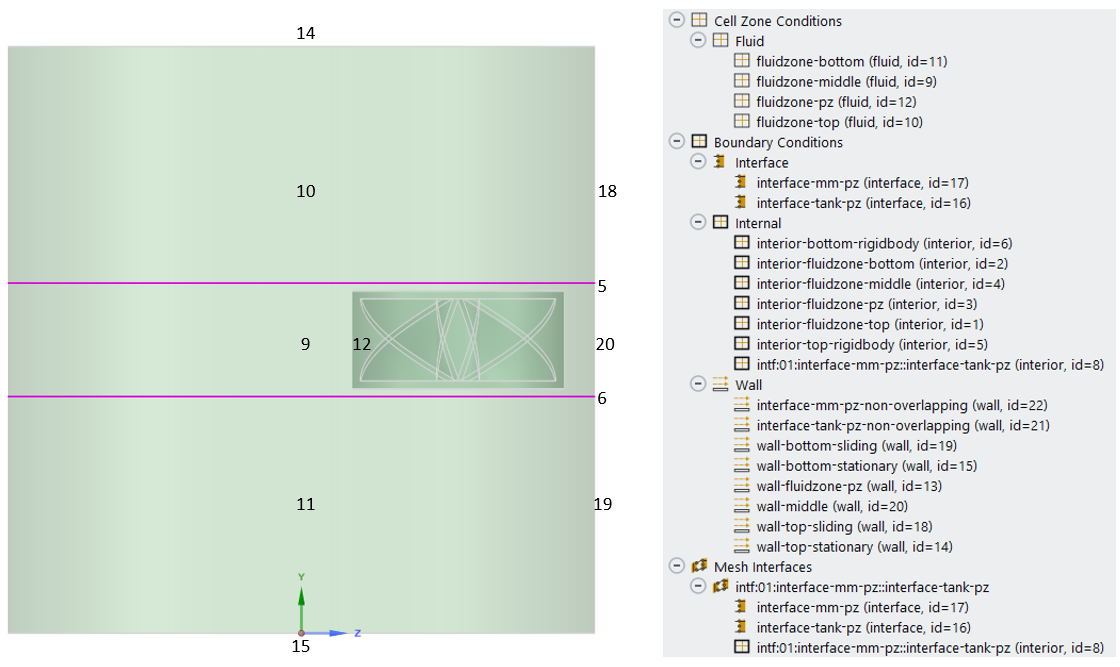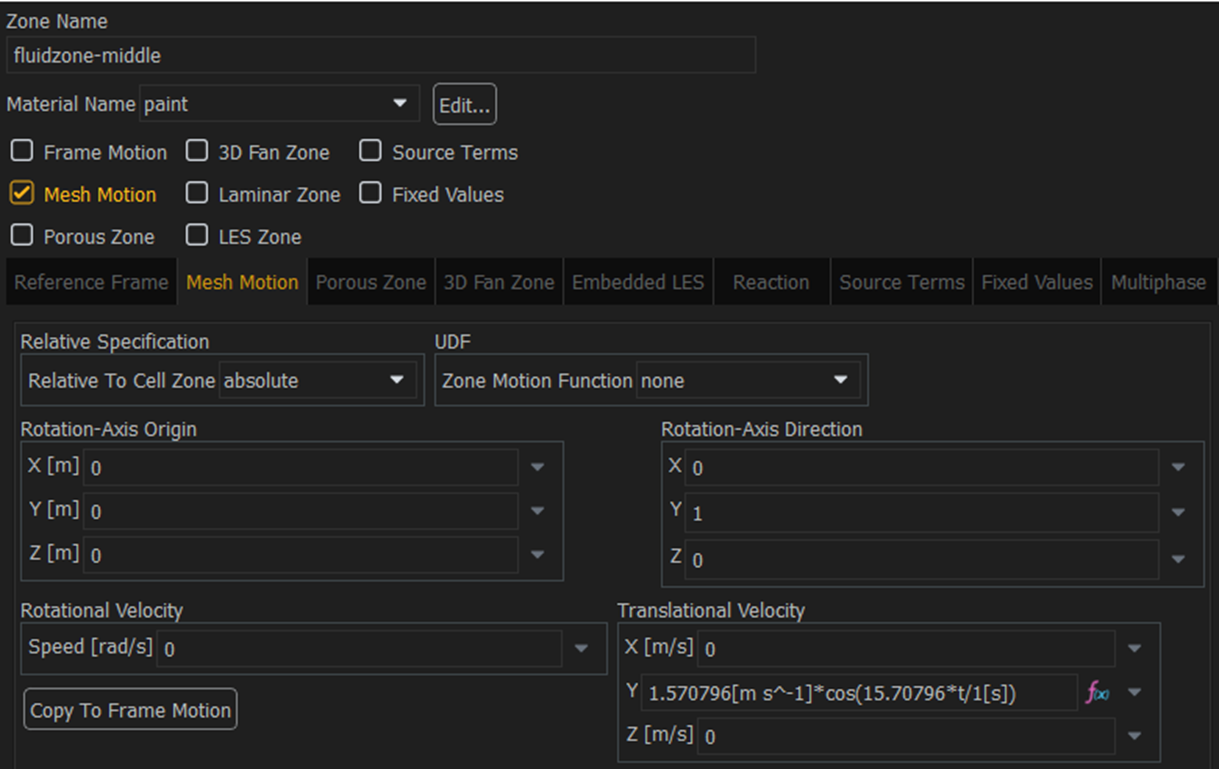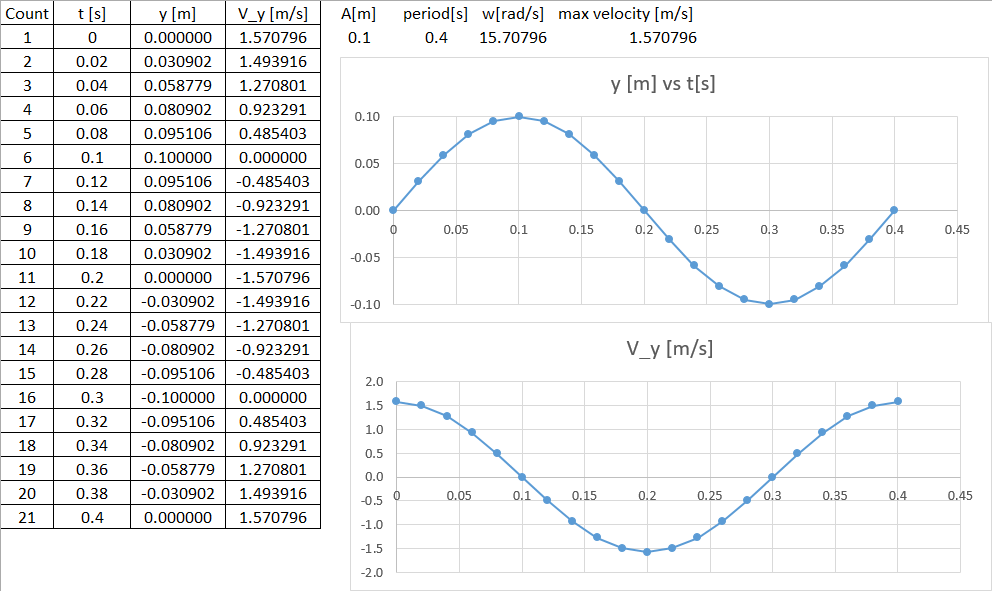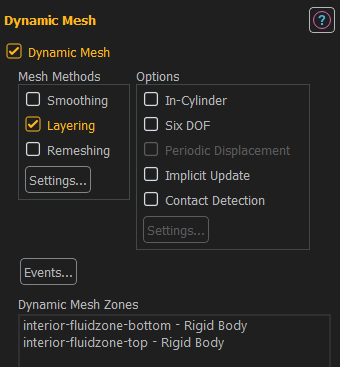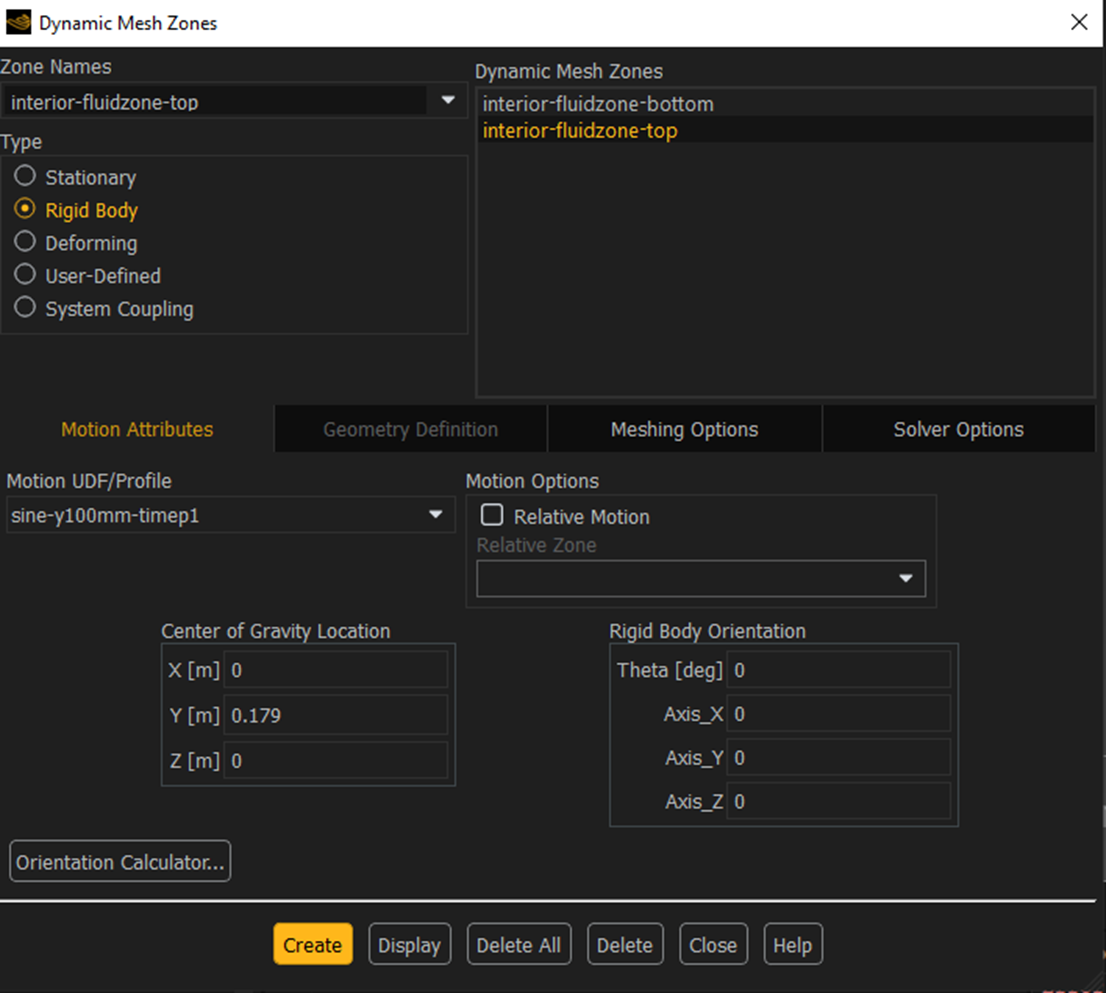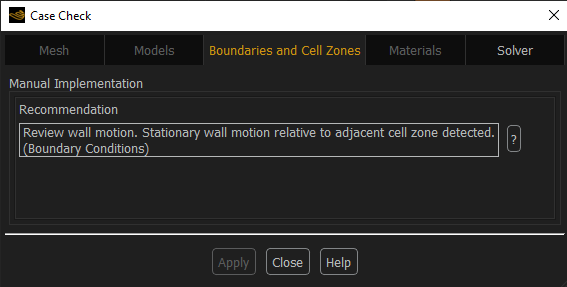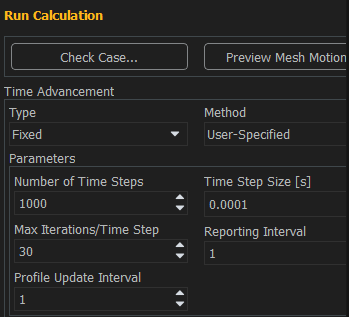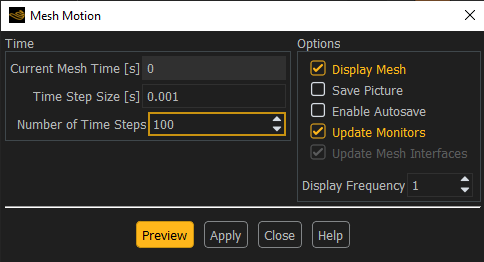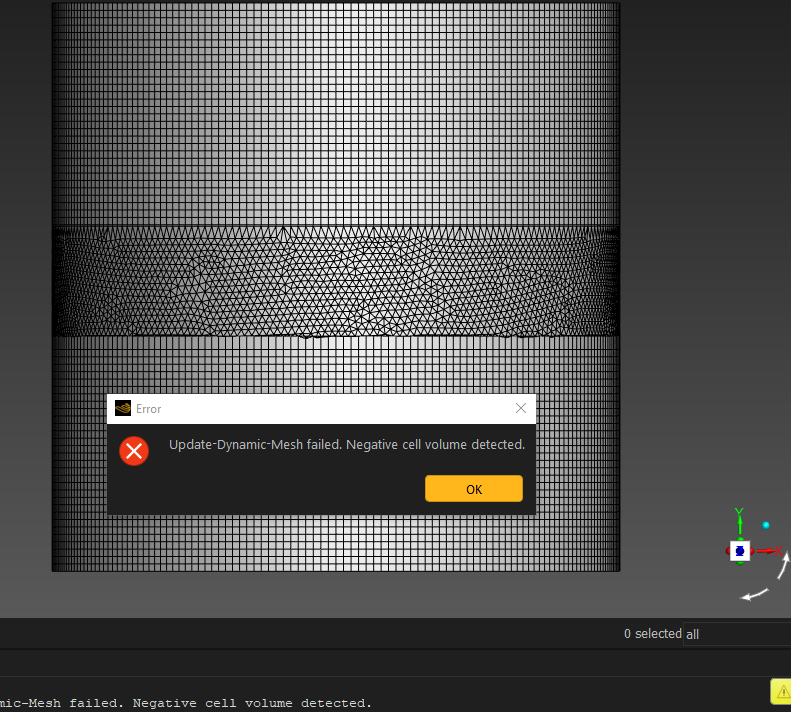-
-
May 27, 2025 at 10:48 am
peteroznewman
SubscriberA cylindrical tank is completely filled with paint. In the tank are two propellers on a vertical axis that spin and move vertically together to mix the paint. In the complete model, there are two phases that have separated into more and less dense fluids. The purpose of the model is to evaluate the mixing of those two phases.
A simpler version of the problem with only rotational propeller movement is working using the Sliding Mesh method. In the image below, some artifacts at the interface between the rotating zone around the propeller and the static zone of the tank can be seen. This was a coarse mesh to establish that the mesh motion was working. Any suggestions about that artifact are welcome but that could be addressed separately in a different discussion.
The topic for this discussion is to add the axial motion of the propellers to the model.
The first idea to achieve that is to split the tank into three zones: top, middle and bottom. This was done in SpaceClaim and Shared Topology was used to mesh through the interior faces at the split planes to avoid adding interfaces. The rotating propeller zones are enclosed in the middle-static tank zone. The sliding mesh method used for the propeller zones had the “Relative To Cell” setting changed from Absolute to Relative to Cell Zone so the propeller zones would translate with the middle zone.
Dynamic Mesh was selected to deform the top and bottom static zones of the tank using Layering only for the first attempt.
Mesh Motion has been defined on the middle-static zone and an expression causes the middle static zone to translate along the Y axis.
Here is the initial mesh.
Here is the mesh at a later time step.
Top and bottom tanks zones are deforming, and the propellers are moving up with the middle zone. Notice the compressed thickness of the bottom row of the top and the stretched thickness of the top row of the bottom. The next time step results in a negative cell volume error. Dynamic Mesh was edited to try Smoothing and Remeshing but the negative cell volume error persisted.
I would be grateful for any suggestions for how to achieve the axial and rotational movement of the propellers in the tank.
Regards,
peteroznewman -
May 27, 2025 at 5:34 pm
Federico
Ansys EmployeeIn the Dynamic Mesh zone settings, you must specify the cell layer height in the Meshing Options for the Layering zones. In this case, you have not defined any Dynamic Mesh zones which is probably why Layering is not happening in your case.
For best practices, you would want to see layering occur away from moving boundaries (i.e. at the very top and at the very bottom of your model as shown in your screenshots). In that case, you should set each Layering cell zone with Rigid Body motion to follow the same motion as your sliding mesh in the middle. Then, set the top and bottom boundaries as Stationary and set the Cell Height to the desired layer height in their corresponding Meshing Options. This last parameter is what determines when Collapse or Splitting occurs (default value of Cell Height = 0 means no collapse/split).
-
May 27, 2025 at 9:55 pm
peteroznewman
SubscriberThank you for the reply Frederico,
After I posted my question, I found a How To video in the Ansys Help system in the Fluent Tutorials that shows what you describe above. https://www.youtube.com/watch?v=fbaV_knzzks
I created two Dynamic Mesh Zones, one for the top and one for the bottom fluid zone and chose Layering only.
When I click on the Settings for Mesh Methods, I see the Layering constants.
Below is the dialog to set up one of the dynamic mesh zones. There is no Layering Option.
In the Ansys How To video, one boundary on the Inlet zone has a Motion Profile that causes that boundary to move.
In my example, I want the top and bottom zones to deform because the middle zone has a Mesh Motion cell condition. So the face shared between the middle zone and the top or bottom zone is moved by the adjacent zone moving. Below is the Mesh Motion setting on the middle zone.
You said “set the top and bottom boundaries as Stationary”. Here are the Wall Boundary Conditions I currently have.
The walls-tank-top is composed of two surfaces: a cylidrical surface and a flat circular top surface. That is currently set to Stationary Wall.
You are suggesting that this should be separated into two wall boundary conditions so the top face can be left as stationary, but the cylindrical face, would that be defined as a Moving Wall?
Same goes for the walls-tank-bottom boundary.
“you should set each Layering cell zone with Rigid Body motion to follow the same motion as your sliding mesh in the middle.”
The motion of the middle zone follows a sine expression. When I add a Dynamic Mesh Zone for the fluidzone-top-static and set it to Rigid Body, there is a box for Relative Motion, but it does not allow me to see any zones in the pull down.
I don’t have a Motion UDF/Profile because I used an expression directly in the Translational Velocity Y component for the middle zone condition.
Please advise on the best path forward, thanks for your help.
-
May 28, 2025 at 3:11 pm
Federico
Ansys EmployeeEach layering cell zone should be set as Rigid Body Motion (with the motion following the oscillating sin expression). It will move the entire cell zone according to that expression.
To set the location of the Layering collapse/split, you need to have a boundary zone for the Top wall and a second for the Bottom wall. Set them as Stationary in the Dynamic Mesh zone settings. When you do, go to their corresponding Meshing Options (still in the Dynamic Mesh Zone settings page) and define the Layer cell height.
The mesh motion set for the inner zone with the sliding mesh can remain as you had previously set it up.
-
May 29, 2025 at 9:02 pm
peteroznewman
SubscriberThank you for the clarification Federico, I found another good Dynamic Mesh tutorial video: https://www.youtube.com/watch?v=4nFYwgmSkQM
I have a clean model with revised zone names as shown below. The fluidzone-pz is contained within the middle zone but with a non-congruent mesh, so there is an interface defined. For this first attempt, I will not define Mesh Motion for the pz relative to the middle.
Here is the Mesh Motion with an expression on the fluidzone-middle.
I created a Rigid Body Dynamic Mesh Zone for interior-bottom-rigidbody and interior-top-rigidbody and they are assigned a Motion Profile that is the Y position vs time. Is it okay to use a Y velocity expression on the middle zone, and a Y position profile for the interior-top-rigidbody surface or is it better to create a Y velocity profile for the Motion Profile of the interior surfaces?
Is it true that Profile data should be in meters even if the mesh is in mm?
Below is the Dynamic Mesh dialog.
I was able to define a Cell Height for the fluidzone. I don’t understand why there are two rows.
Here is the model after Initialization for a transient calculation.
When I Check Case, I get this recommendation.
Does this suggest there is an issue?
I tried to Run Calculation with these parameters.
I tried to Preview Mesh Motion… using 100 steps to get to a time of 0.1 s that should be 100 mm of upward motion of the middle section in a tank 300 mm tall.
Unfortunately, I got a Negative Cell Volume detected error.
I’m not sure what needs to be set to deforming, is it the top and bottom fluidzones or is it the wall-top and wall bottom cylidrical faces?
Please advise.
Regards,
peteroznewman
-
June 11, 2025 at 10:27 am
-
- You must be logged in to reply to this topic.


- air flow in and out of computer case
- Varying Bond model parameters to mimic soil particle cohesion/stiction
- Eroded Mass due to Erosion of Soil Particles by Fluids
- I am doing a corona simulation. But particles are not spreading.
- Centrifugal Fan Analysis for Determination of Characteristic Curve
- Issue to compile a UDF in ANSYS Fluent
- Guidance needed for Conjugate Heat Transfer Analysis for a 3s3p Li-ion Battery
- JACOBI Convergence Issue in ANSYS AQWA
- affinity not set
- Resuming SAG Mill Simulation with New Particle Batch in Rocky

-
4167
-
1487
-
1363
-
1194
-
1021

© 2025 Copyright ANSYS, Inc. All rights reserved.

